Section II - Performance Tests, Synthetic
In this section of testing we cover the synthetics. These are tests that run a scripted sequence of internal APIs or that use another installed application to perform a series of scripted events. They are great in that they can provide reproducible results across various platforms. On the down side, synthetic tests can be fooled with driver tweaks and optimizations. In some cases it is necessary to rename the .exe file to something generic to discover if this is the case. In any event when this is needed (when a test shows a drastic difference in performance over the renamed exe) we will note this and show both results for comparison.
PCMark Vantage -
PCMark Vantage is a suite of tests designed to test the power of your computer. It runs task that range from productivity to gaming (DX9 only). It is a great test to identify potential problem areas with general performance on a system. It can also show how well a single component can increase or decrease system-wide performance. We run both the x86 and x64 PCMark Suites for testing.
 |
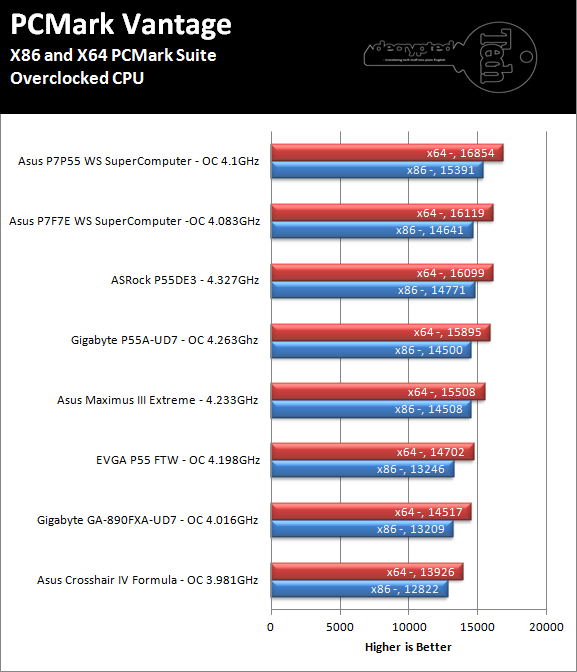 |
The 890FXA-UD7 does not do terribly well at PCMark Vantage. This is possibly a result of the poor memory performance but could also be due to an issue with the way PCMark handles six CPU cores. Even overclocked with better memory performance we see lower than expected numbers here, at least when compared to P55 based motherboards. It does manage to outperform the Asus Crosshair IV, but only when overclocked.
3DMark Vantage -
3DMark Vantage is the other FutureMark test that we run on our motherboards. This test simulates the typical tasks that a GPU (and system) would have to perform to provide you with a good gaming experience. It is based on the DX9 and DX10 engines but can only be installed on Windows Vista or later.
The suite of tests covers DX9 rendering, DX10 rendering, AI computations and PhysX. The problem with the PhysX calculations is that nVidia owns that technology. This gives them an upper hand in the test runs, for this reason we will always run 3DMark Vantage with GPU PhysX enabled and disabled when we use an nVidia GPU in our testing. As we currently use an HD 5870 this will not be an issue for now.
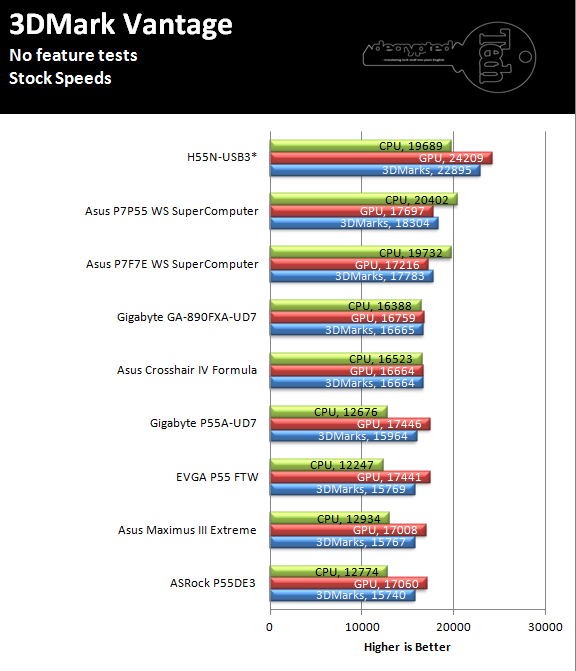 |
 |
For our 3DMark Vantage testing we find that the 890FXA-UD7 does not do too bad. It manages to keep ahead of most of the competition but lags behind the systems running either the Xeon or the 875K (understandably). It looks like we might be able to expect some good gaming performance from the 890FXA-UD7, but of course no synthetic test can tell the whole story.
HyperPi 0.99b -
HyperPi is a front end application that allows you to easily run multiple instances of the SuperPi application. SuperPi, for those that are not familiar with it, is an application that measures the time it takes to calculate the number Pi out to as many as 32 million places. This calculation is then checked and run multiple times (up to 24 for a 32M run). This test stresses the CPU, Memory and HDD as data is handed off between the three. If there is a weak link, HyperPi will show it. For our testing we run the 32M test on as many cores (and threads) as the CPU has available. The slowest CPU time is then recorded.
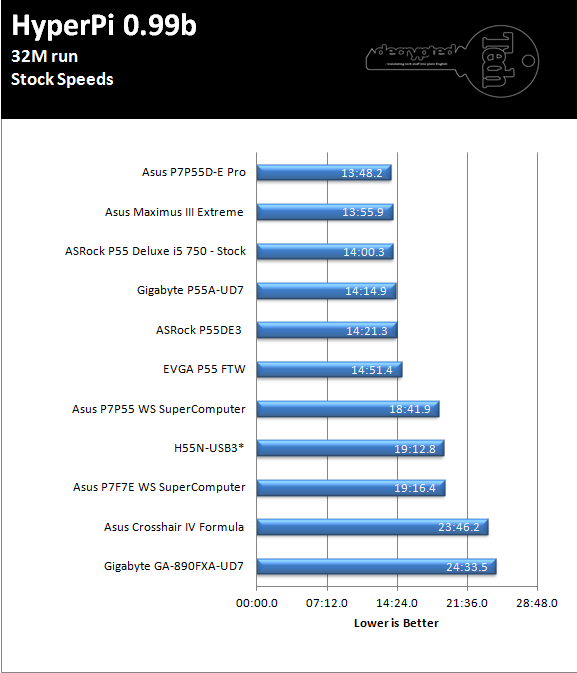 |
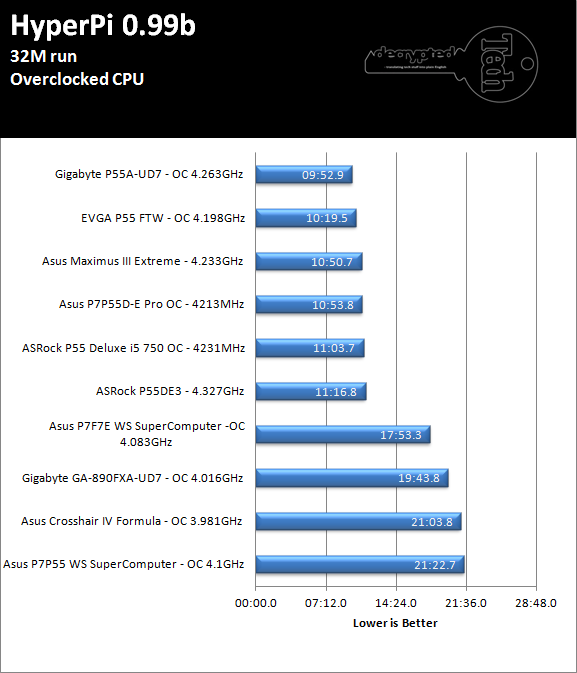 |
The HyperPi scores we see here are a direct reflection of the memory performance we saw above. At stock speeds the slower RAM performance prevents the CPU from computing PI I faster. When we pushed the CPU speed (and also the memory speeds) we see these numbers jump disproportionately to the increase in clock speed. While the slower stock speeds are a little troubling it is comforting to know that by tweaking the memory (speed, CAS etc.) we know that we can improve on the somewhat.
Cinebench R11.5 -
Cinenbench R11.5 is the 11th release of Moxon’s rendering test. This test is based off of the Cinema 4D engine, which is one of the industry standard tools for digital animation. It is a powerful product with many different modules that can be “plugged” into it to increase its effectiveness. With Cinebench you get to see how your computer would do using this application. There are two tests; one tests the CPU’s ability to render an image across multiple cores or threads. The other tests your systems ability to handle OpenGL based rendering.
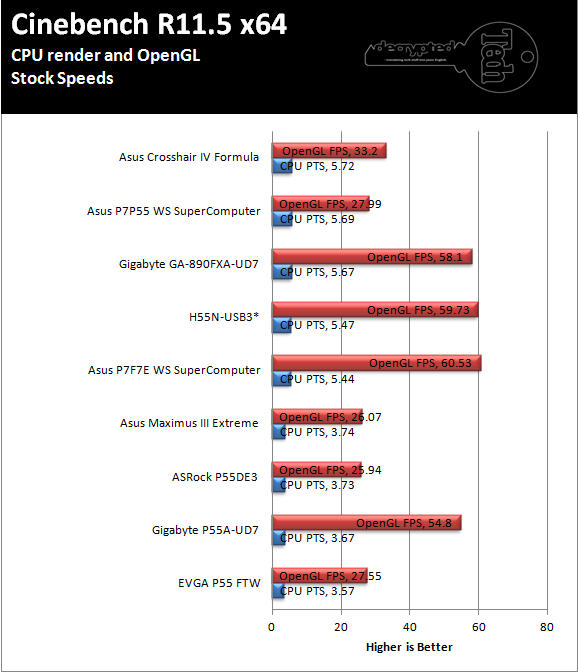 |
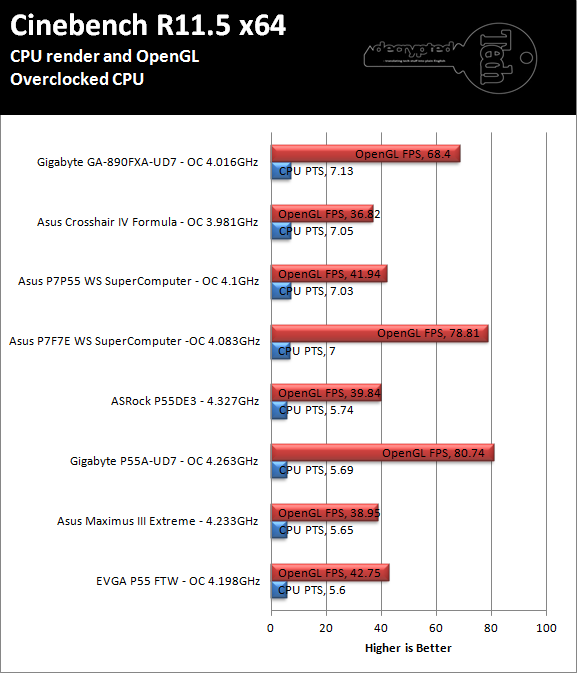 |
The 890FXA-UD7 with our Phenom II X6 1090T does excellent at Cinebench rendering. This is most likely due to the small segments the render has been broken up into. But, no matter the cause it is good to know that you can use the Gigabyte 890FXA-UD7 for this type of workstation application.




